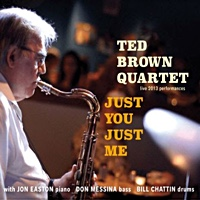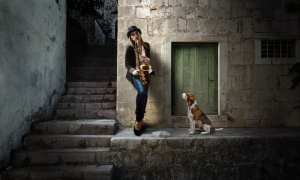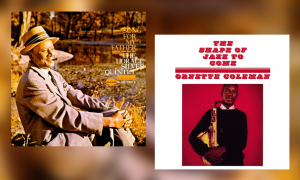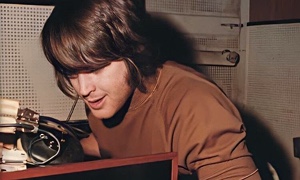Home » Jazz Articles » Building a Jazz Library » Unconventional Instruments
Unconventional Instruments

Looking at the presence of unusual instruments in jazz requires that we either significantly limit the body of existing work or break with the arbitrary "jazz" label. The latter is a complicated and sometimes controversial topic. Alto saxophonist Gary Bartz equated the jazz appellation to the worst of racial slurs, and Miles Davis thought it was not suitable for marketing his music. Meanwhile, brawling purists like Stanley Crouch wouldn't change it or expand the norms for all the trombones in River City. The debate goes on and on without resolution. To build a library of recordings featuring unconventional instruments, we will take a deep breath, remove the blinders, and welcome both customary jazz and creative improvised music of a more genre-less nature.
Instrumental staples of early jazz, such as the banjo, violin, tuba, woodblock, and pedal cymbal, became rarities when modern jazz was still in its infancy. Relatively early in contemporary jazz, regardless of the sub-genre, one could safely expect to see reeds, brass, guitar, piano, bass, and percussion in varying combinations. But even from the relatively early days of jazz, some artists swam against the current. As a child, Fats Waller had played the pipe organ at Harlem's Abyssinian Baptist Church. Between 1926 and 1939, he recorded seventy-three sides on the instrument. It would be three decades before Jimmy Smith popularized the Hammond B3. Electronic tape loops were used in jazz as far back as 1960, Rahsaan Roland Kirk recorded on nose flute in 1963, Sun Ra incorporated the Moog synthesizer in the late 1960s. The sousaphone, lumiphone (a glass marimba), and all manner of percussive devices popped up from time to time. And then there are the instruments with an asterisk added, such as the African globe flute, or Charlie Parker and Ornette Coleman's plastic saxophones. What follows is an unexhaustive sample of unconventional instruments; the search for a jazz ocarina album goes on.
 Alice Coltrane: Harp
Alice Coltrane: Harp A Monastic Trio
(Impulse!, 1968)
After John Coltrane's death, his bandmates, Pharoah Sanders, drummer Rashied Ali, and bassist Jimmy Garrison, performed with his widow, pianist Alice Coltrane on A Monastic Trio. The original double-LP set features Coltrane on harp on the second disc. Coltrane's first album as a leader straddles the line between Eastern mysticism and Western blues, performed with earnestness and grandeur. As with much of Alice Coltrane's music, a deep spiritualty permeates much of the material. Jazz composer/musician Dorothy Ashby laid the groundwork for harp in jazz, but Coltrane had the name.
 John Zorn: Aeolian-Skinner Pipe Organ
John Zorn: Aeolian-Skinner Pipe Organ The Hermetic Organ
(Tzadik Records, 2012)
The Hermetic Organ is a single live improvisation on the Aeolian-Skinner pipe organ at St. Paul's Chapel at Columbia University. This type of organ was primarily built for cathedrals and university chapels like those of the Cathedral of St. John the Divine and Cornell University's Sage Chapel.
John Zorn stepped away from his alto saxophone for an entire series of "Hermetic Organ" recitals, recorded at St. Bartholomew's, St. Paul's Chapel, and St. Paul's Hall, in Huddersfield, UK. The Hermetic Organ is solemn, eerie and beautiful in the vein of Nate Wooley's The Almond (Pogus, 2012).
 Rufus Harley: Bagpipes
Rufus Harley: Bagpipes Courage: The Atlantic Recordings
(Rhino, 2006)
As unlikely as it would seem for a bagpipe player, the late Rufus Harley covers all manner of bop, some free jazz, jazz-funk, and modal music in this compilation. Courage: The Atlantic Recordings offers twenty-one tracks covering Harley's 1966-69 affiliation with Atlantic Records and feature bassist Charles Rainey, Eric Gale, Richard Tee, and Sonny Stitt on various tracks. At times, the bagpipe evokes William Parker's shakuhachi (speaking of odd jazz instruments), and Harley does double duty on saxophone and flute. But mostly, the collection is led by the bagpipe.
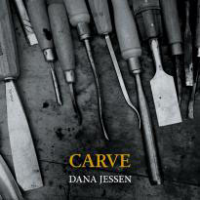 Dana Jessen: Bassoon
Dana Jessen: Bassoon Carve
(Innova Records, 2017)
The bassoon rarely makes an appearance outside of the orchestral setting though it has found a place in jazz recordings dating back to Paul Whiteman and much later with Chick Corea. The instrument is considered one of the most difficult to play, but its natural range and dynamics are far-reaching and versatile. Add in electronics and extended techniques, and you have a unique instrument going beyond its already exceptional array. That is what Dana Jessen has delivered on Carve, an inventive and unusual album of original works and those of several modern creative music composers.
Jessen is the founder of Splinter Reeds, a reed quintet, and has performed with Anthony Braxton's Tri-Centric Orchestra, among many other groups. Carve opens with "Of an Implacable Subtraction," a darkly melancholy piece; its odd meters and multiple layers add an unexpected fullness to the instrumentation. At times, "Fireflies in Winter" sounds more like foghorns in the harbor, but Jessen's vision comes to fruition with remarkable clarity as it builds. That depth is replaced with an emphasis on technique on the brief title track, which features Jessen playing the reed only. High pitched and oddly organic, it is the top of the roller-coaster to the subsequent "Cadenza & Degradation." The title track is presented in three additional variations: bassoon, without a reed, and bassoon with teeth. At more than thirteen minutes in length, the Kyle Bruckmann composition plays out in the lower register of the bassoon, a dark, eerie melody augmented by lacey effects floating almost out of earshot and Jessen providing her bass effects. The bassoonist later rivals Peter Brötzmann's tenor with an unanticipated and menacing growl.
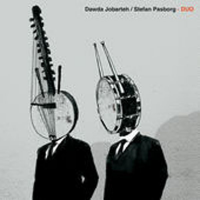 Dawda Jobareth: Kora
Dawda Jobareth: Kora Duo
(ILK Music, 2016)
The kora is the traditional instrument of griots in West Africa. As part of the centuries-old oral tradition of the region, music for the instrument was not written until the twentieth century. The twenty-one-string lute/harp doesn't neatly fit in a single instrument category, sometimes sounding like a harp, sometimes like a guitar. Despite coming to the difficult instrument later in life, Dawda Jobareth is considered one of the best kora players in the world. On Duo he is paired with Danish percussionist Stefan Pasborg.
Pasborg's jazz bona fides are impressive. He counts projects with Miroslav Vitous, Ellery Eskelin, Tim Berne, Palle Danielsson, Michael Formanek and Tomasz Stańko, among his credits. Duo itself draws completely on the genre. Charles Mingus' "Better Get Hit in Your Soul" is searing, with its cracking, driving drums, and the kora electronically manipulated to sound like a hybrid of its natural characteristics and that of an electric guitar. Ornette Coleman's "Dancing in Your Head" is laced with the particular flavor of West African blues coursing through a dream-like, sing-song theme. Don Cherry's "Mopti" and Albert Ayler's "A Change Has Come" are full of bristling energy, distortion, and electronic effects, and like "Bells," Jobareth uses these covers to expand the sonic scope of the kora. At the same time, Pasborg vacillates between flashes of noise and subtle course changes.
 Nils Økland: Hardanger Fiddle
Nils Økland: Hardanger Fiddle Kjølvatn
(ECM, 2016)
The significance of the Hardanger Fiddle—a homespun Norwegian variation of the violin—is that while it is played on four strings, as a similar string instrument would be, it has four or five additional strings under the fingerboard, which vibrate during playing. Though its use has been limited in modern music, Nils Økland has not only mastered it but has expanded its scope across non-traditional folk styles from rock, trance, and classical to jazz. On Kjølvatn he plays an assortment of stringed instruments, but it is this fiddle that supplies the most unusual music.
Despite a crafty groove, "Mali" opens the collection in a Celtic vein, and while not a reel, it is up-tempo and infectious. "Undergrunn," in sharp contrast, is a beautifully melancholy piece, as is the title track with Mats Eilertsen's bass dictating the mood. Darker still is the ominous "Drev," where Rolf-Erik Nylstrøm's saxophone rumbles and the ominous "Puls" with Håkon Mørch Stene's undercurrent of booming percussion joining Eilertsen. "Blå Harding" evokes the Scottish Highlands thanks to Sigbjorn Apeland's harmonium and Økland on the fiddle.
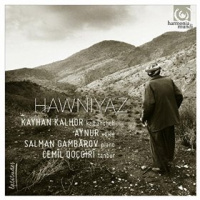 Kayhan Kalhor: Kamancheh
Kayhan Kalhor: Kamancheh Hawniyaz
(Harmonia Mundi, 2016)
Hawniyaz runs just under one hour with five long compositions in the vein of improvised Islamic music known as "mugham." The pieces blend this tradition and its fusion alternative, mugham jazz (Azerbaijani jazz). Kayhan Kalhor is best known as a member of Yo-Yo Ma's Silk Road Ensemble and has had a number of his compositions for that group nominated for Grammy Awards. Kalhor is also a co-founder of the ensembles Dastan and Ghazal, the latter specializing in a blend of Persian and Indian improvisations. His instrument, the kamancheh, is sometimes referred to as a "spiked fiddle." It is common in Central Asia and dates back to the eleventh century. With three strings—two steel and one brass—the wood-body instrument pivots on a spike to meet the bow and mimic a range of sounds from that of the human voice to the viola.
A global cadre of improvisers surrounds Kalhor. Azerbaijani jazz pianist and composer Salman Gambarov has played jazz clubs and festivals throughout the world and has the most solidly defined background in the jazz genre. However, he experiments with numerous less-identifiable hybrids. German-born, of Kurdish descent, Cemîl Qoçgirî plays the tenbûr, a long-necked member of the lute family and he is renowned for his experimental approach to the instrument. "Malan Barkir-Bêrîvanê" comes close to jazz improvisation, while "Xidire min" and the closing piece, "Ehmedo-Ez reben Im" are uncategorizable amalgams of classical, folk, and jazz elements. Hawniyaz is a striking album with a very different approach; it is intelligent, accessible, and compelling.
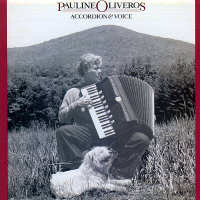 Pauline Oliveros: Accordion
Pauline Oliveros: Accordion Accordion & Voice
(Important Records, 2014)
The late composer and multi-instrumentalist Pauline Oliveros was one of a kind. A pioneer in the subculture of experimental electronic music and composition since the 1960s, her acoustic instrument of choice was the accordion. Yet her résumé spoke to a broad range of interests and a unique demand for her talents. She influenced avant-garde composers John Cage and Terry Riley, performed or recorded with Roscoe Mitchell, Susie Ibarra, Connie Crothers, Wadada Leo Smith, producer/musician DJ Spooky and has composed for alternative rockers Sonic Youth. Accordion & Voice was originally released in 1982 and was the first of Oliveros's works as a soloist.
Accordion & Voice consists of two extended compositions, "Horse Sings from Cloud" and "Rattlesnake Mountain," each clocking in at slightly over twenty-two minutes. Oliveros described these pieces as musical proxies for meditation, but that may imply that they are principally drone-based. While that is a dominant component of these works, Oliveros' accordion adds layers of complexity and texture that push these compositions beyond any singular effect. A mash-up of Brian Eno's Lux (Warp, 2012) and Nils Petter Molvaer and Moritz von Oswald's 1/1 (EmArcy, 2013) might have generated a similar experience. On Accordion & Voice Oliveros had brought together the ambiance of the former and dark lyricism of the latter, some thirty years earlier.
"Horse Sings from Cloud" opens Accordion & Voice with an amalgamation of acoustic playing and electronic processing; it's a technique that cultivates Oliveros' unique vision. She uses a customized accordion of her conception with a large sound chamber, multiple processors, pitch-blending pedals, and an extended bass range. In Oliveros' hands, the mammoth instrument can create acoustic effects beyond the instrument's normal expectations and mutually exclusive of the accompanying electronics where that is her desired effect. The result is a work of surprising harmonic richness and texture. "Rattlesnake Mountain" is a more spartan piece, but Oliveros precisely plots movement and density around a structured core. Her construction results in plush patterns and alternating rhythms.
 Leap of Faith: AquaSonic
Leap of Faith: AquaSonic Domains
(Evil Clown, 2017)
The AquaSonic waterphone is a type of dissonant acoustic tuned idiophone consisting of a stainless steel resonator bowl with a cylindrical neck and bronze rods of different lengths and diameters around the bowl's rim. The resonator often contains a small amount of water, giving the waterphone an otherworldly sound. Invented in the 1960s, it most often appears in soundtrack recordings such as Poltergeist, The Matrix, and Star Trek: The Motion Picture.
David Peck (aka PEK) founded the Leap of Faith collective twenty years ago in Cambridge, MA. Ranging from trio to full orchestra, Leap of Faith is known for including both conventional jazz instruments and those such as the tarota, sheng, chau gong, plate gong; daiko, depending on the project dan-mo, englephone, tank bells; glockenspiel, and many other objects. In all the dozens of Leap of Faith releases, the one constant is Glynis Lomon, and while she plays cello on these recordings, her AquaSonic is ubiquitous. Lomon studied with Bill Dixon, performing and recording with the trumpeter throughout his later career. She has also played with the best of free jazz and avant-garde, including Jimmy Lyons, Cecil Taylor, Lawrence "Butch" Morris, William Parker and Joe Morris.
Like all Leap of Faith recordings, Domains challenges orthodox beliefs and preconceived ideas about composing and performing. Equal parts noise and melody, the album furthers the process of collective improvisation, or as PEK prefers to call it, pure improvisation. By the leader's admission, Domains is ..." demanding music with a limited total audience...."
 Abdul Moimême: Prepared Guitar
Abdul Moimême: Prepared Guitar Exosphere
(Creative Sources Recordings, 2017)
That most popular of instruments lumped in with the daxophone, rachet, and serpent? In the hands and mind of Portuguese native Abdul Moimême, a guitar is not a guitar. Exosphere features Moimême on his two homemade electric guitars, enhancers, and various sound devices. The sole track is the forty-one-minute title track. Much of what Moimême does here is a product of reverberation, and what he does with that reverberation is remarkable. Listen at the sixteen-minute mark in, and you'll hear something akin to a muted blast of trumpets. Further in, there is the jangle of chimes and later still the approximation of piano keys. All these peripheral effects lie within a broader universe that is indeterminate in nature. Rarely does Moimême incorporate a guitar-like dynamic—he plays his two custom guitars simultaneously using an electronic bow, amplified through a pre-amp and two speakers. In addition, he utilizes a gyroscope, music boxes, and other objects to create an otherworldly soundscape.
Exosphere was recorded live at The Church of Santa Engrácia—now the Panteão Nacional—a 17th-century monument in Lisbon. The music can't be described in literal terms, nor is it meant to be. Moimême has developed a method of making reverberation into an instrument that can stand alone. As a narrative Exosphere is allegorical and conversant, always leading to another destination but never being obvious about where Moimême intends to set down. The artist travels through backdrops that are only familiar enough to invite a double-take, a bit of misperception about the source of a sound or the direction it is coming from. There is some intangible quality to Moimême's composition that makes one want to listen repeatedly. Exosphere is an extraordinarily unique and highly enjoyable album.
Tags
PREVIOUS / NEXT
Support All About Jazz
 All About Jazz has been a pillar of jazz since 1995, championing it as an art form and, more importantly, supporting the musicians who make it. Our enduring commitment has made "AAJ" one of the most culturally important websites of its kind, read by hundreds of thousands of fans, musicians and industry figures every month.
All About Jazz has been a pillar of jazz since 1995, championing it as an art form and, more importantly, supporting the musicians who make it. Our enduring commitment has made "AAJ" one of the most culturally important websites of its kind, read by hundreds of thousands of fans, musicians and industry figures every month.









